Habuba Kabira
Habuba Kabira (Tell Qanas) is the site of an Uruk settlement along the Euphrates in Syria, founded during the later part of the Uruk period. It was about 800 mi (1,300 km) from the city of Uruk. The site is now mostly underwater due to the Tabqa Dam project.
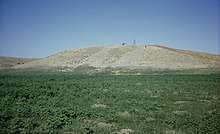 Habuba Kabira (south), before the area was flooded by the Tabqa Dam project. | |
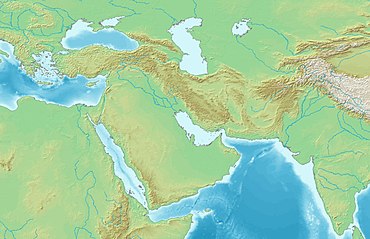 Shown within West and Central Asia 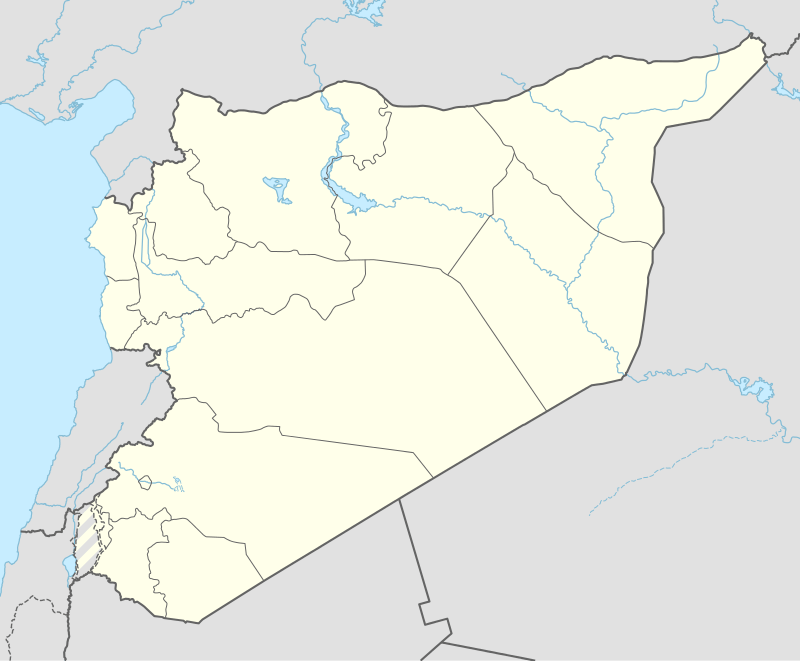 Habuba Kabira (Syria) | |
| Location | Syria |
|---|---|
| Region | Aleppo Governorate |
| Coordinates | 36.151446°N 38.061950°E |
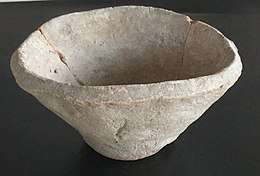
History
Habuba Kabira was built around 3500 BCE on a regular plain with strong defensive walls, but was abandoned after a few generations and never inhabited again.[1] The site is around 18 hectares in area, with the walled area encompassing 10 hectares.
Lisa Cooper cites evidence from Heinrich, et al. 1969 as well as Heusch, 1980 indicating that the site was reinhabited from late Early Bronze Age to Middle Bronze Age with reuse of building walls and the defensive walls.[2]
There were also several other late Uruk enclaves and outposts in this general area. They include Arslantepe (attested at level VIA), Hassek Höyük (attested at level 5), Jebel/Djebel Aruda (near Tell es-Sweyhat), and Tepecik (Elazığ Province, attested at level 3). Godin Tepe is a similar site in Iran.[3]
Archaeology
The site was excavated for 9 seasons from 1969 to 1975 by a Deutsche Orient-Gesellschaft team led by Ernst Heinrich and Eva Strommenger as part of the Tabqa Dam rescue excavation effort.[4]
 Kabira reconstruction, Berlin Museum
Kabira reconstruction, Berlin Museum Berlin Museum
Berlin Museum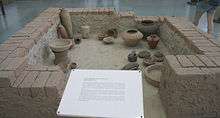 Berlin Museum
Berlin Museum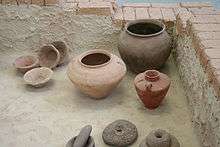 Berlin Museum
Berlin Museum Berlin Museum
Berlin Museum Berlin Museum
Berlin Museum
Notes
- Donald Kagan, Steven Ozment, and Frank M. Turner. The Western Heritage (Volume One: To 1740). Ninth Edition. Upper Saddle River, New Jersey: Pearson Education, 2007. Print.
- Lisa Cooper, "The demise and regeneration of Bronze Age urban centers in the Euphrates Valley of Syria,"in After Collapse: The Regeneration of Complex Societies, ed by Glenn M. Schwartz and John J. Nicholas, 2006:18-37
- Giorgi Leon Kavtaradze (2012), On the Importance of the Caucasian Chronology for the Foundation of the Common Near Eastern – East European Chronological System
- Eva Strommenger, Habuba Kabira: Eine Stadt vor 5000 Jahren : Ausgrabungen der Deutschen Orient-Gesellschaft am Euphrat in Habuba Kabira, Syrien (Sendschrift der Deutschen Orient-Gesellschaft), von Zabern, 1980, ISBN 3-8053-0449-8
References
- Dietrich Surenhagen, Keramikproduktion in Habuba Kabira-Sud: Unters. zur Keramikproduktion innerhalb d. spat-urukzeitl. Siedlung Habuba Kabira-Sud in Nordsyrien, Hessling, 1978, ISBN 3-7769-0190-X
See also
- Cities of the ancient Near East
- History of Mesopotamia
- Jawa